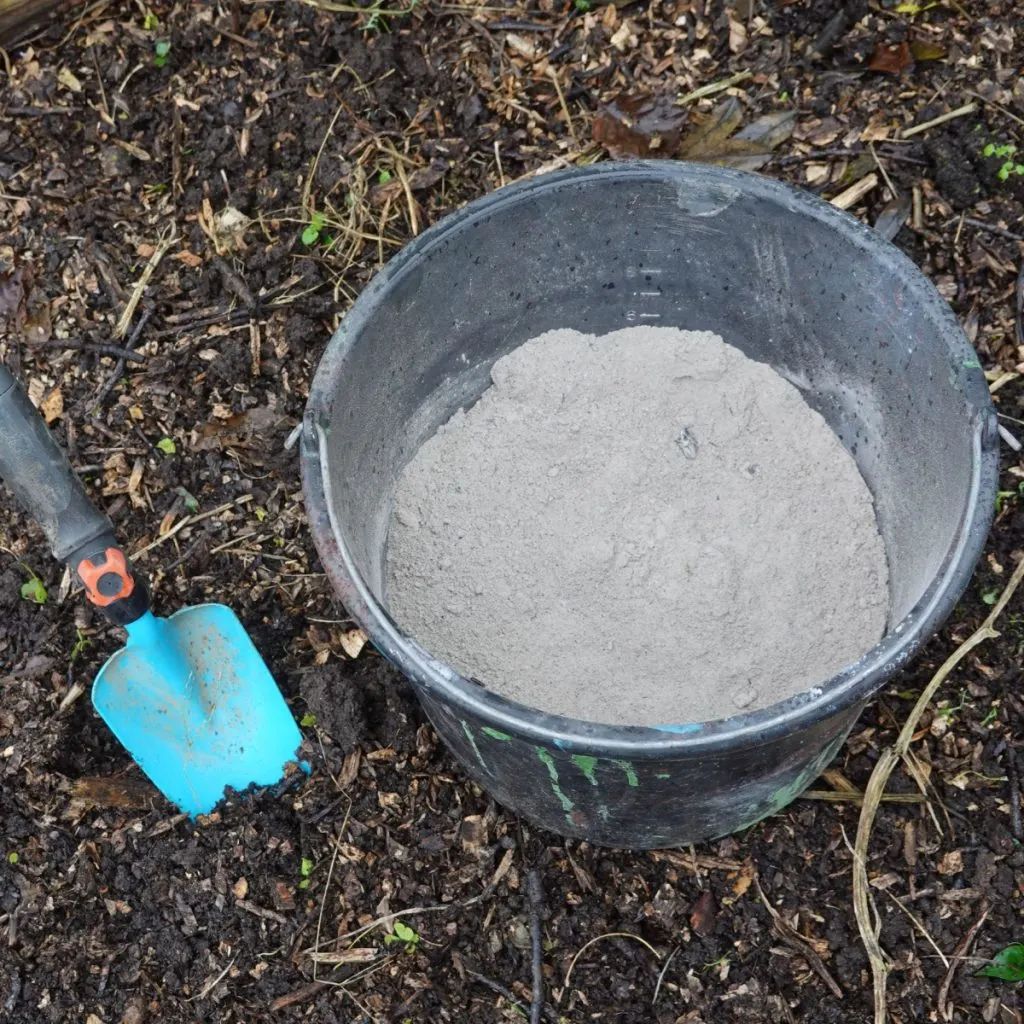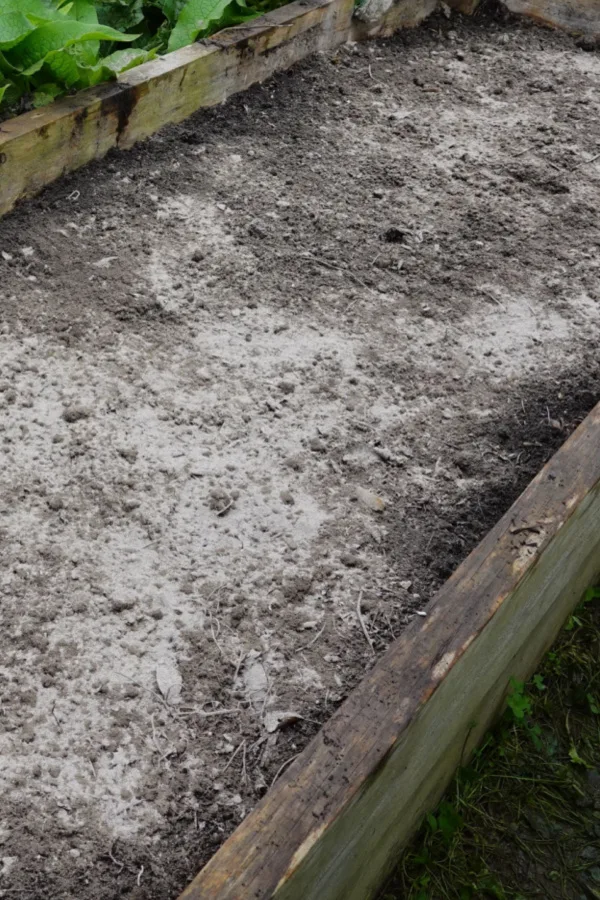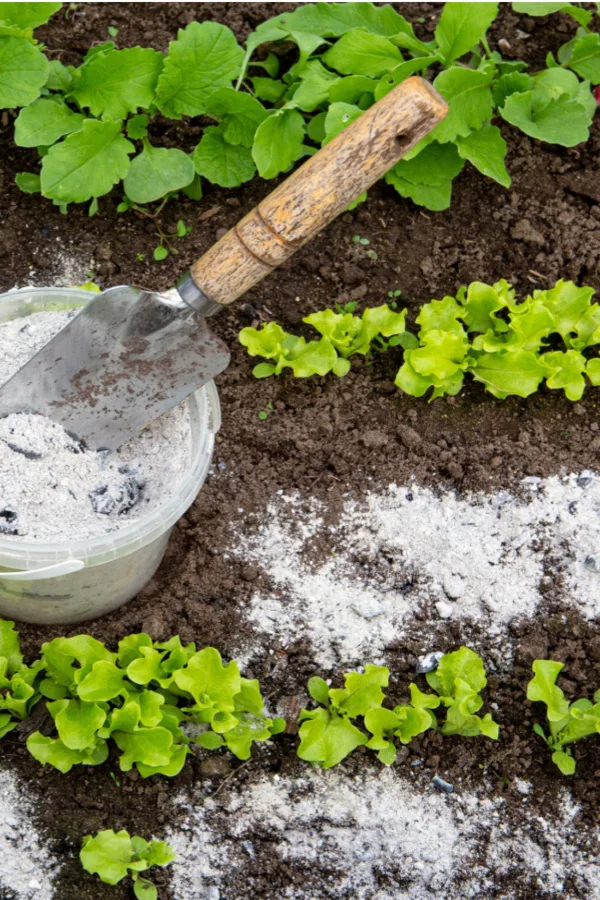Did you know that using wood ashes from your wood stove or fireplace on your garden over the winter and early spring months can help rejuvenate your soil to grow better than ever next year?
When it comes to adding power back to your soil without breaking the bank, it’s hard to beat wood ashes. Not only can ashes help to reduce acidic levels in garden soil, which can be helpful for many vegetable plants, they also happen to be loaded with valuable nutrients and minerals.
The ashes of wood contain potassium, magnesium and phosphorous. All of which are extremely helpful to the growth and development of plants. But even better, they contain loads of calcium, which can be critical for the health and well being of vegetable plants – especially tomatoes and peppers!

Both tomatoes and peppers need calcium in order to stave off blossom end rot. Without enough calcium in the soil, the plant’s fruit can develop rot on its flowering end, ruining the fruit in the process. After a few years of growing these vegetables in the same space, the soil can often lose much of its calcium levels. Which is exactly where ashes can help!
But before you run out to garden and start dumping those ashes, it’s important to know how and where they can be used. Just as with nearly everything in life, too much of a good thing can sometimes not be good at all!
With that in mind, here is how and where to use ashes in your garden in the right amounts to re-energize your soil!
How To Rejuvenate Your Garden Using Wood Ashes
There are actually three separate but very effective ways and time periods to utilize wood ashes in your garden. Here is a break down of each method along with exactly how to apply the ashes for best results.
Using Wood Ashes As A Top Dressing
The first and most common method is to use ashes to top dress your entire garden area in the winter or very early spring. Top dressing is nothing more than spreading a thin layer over the entire soil surface area.

By broadcasting ashes over the surface, it helps to replenish vital nutrients lost from the previous year’s crops. And don’t just use to sprinkle over your large garden. It also works equally well for helping to recharge raised beds as well! See: How To Keep Raised Bed Soil Healthy – Give New Life To Old Soil!
The key when top dressing is to go lightly. In light amounts, wood ashes will not have much affect on a soil’s pH. But if put on too heavily, it can make the soil too alkaline. If your soil happens to lean to the acidic side already, you can put it on heavier to help get your soil to a more beneficial neutral pH.
How To Know Your Soil’s pH – Using Wood Ashes In The Garden
As for how to know what your soil’s pH is, the best method is to use an instant pH meter. These simple, inexpensive instant meters can be great for all the plants in your garden and flowerbeds. Even better, you can find 4 in 1 meters that can also give soil moisture, temperature and even sunlight levels as well.
- Affiliate Product Link: 4-in-1Soil PH Meter,Soil Moisture Meter ,Digital Plant Temperature/Soil Moisture/PH Meter/Sunlight Intensity
In general, if your soil’s PH is close to neutral, spread about 1 pound of ash for every 100 square feet of garden space. If your soil happens to be on the more acidic side, you can double that to help raise the PH level.

Top dressing in the winter or very early spring allows time for the ashes to work into the soil. It’s always a good idea when spreading ashes to wear gloves and goggles to protect from the ashes blowing in your eyes. You can also water it down afterwards to help set it in place.
Using Wood Ashes In Planting Holes
A second great use for ashes is to use them in your planting holes. There are actually a few common vegetable plants that benefit greatly from this process. At the top of that list – tomato, pepper, cucumber and zucchini plants!
By mixing in 1 cup of ashes in each hole on planting day, you can provide your young transplants with a great source of nutrients for strong growth and development. With tomatoes and peppers, it can be a huge influx of calcium to help against blossom end rot!
But as you will see below, you can also use wood ashes after planting on the surface for many plants as well.
Using Wood Ashes As A Mulch
Last but not least, ashes are incredibly helpful for some vegetable crops when used as a light coating of mulch. When used on the surface of the soil, the nutrients from the ashes soak down to the roots of plants. And every time it rains or you water, those nutrients soak in.
This low and slow release of power can be incredibly beneficial. Especially for crops such as cucumbers, tomatoes, lettuce, kale, peppers and onions. We are not talking about a thick layer at all, just a sprinkling around crops.

For larger plants such as cucumbers, tomatoes and peppers, put a quarter to one-half of a cup around the base of each plant. It’s best to then scratch the surface to work the ash in a bit. Finish by watering and your plants are ready to power up!
For greens, onions and kale crops that are often in rows, simply lightly dust the soil. Once dusted, work in a bit and water. One note of caution, it’s best not to use ashes around potato plants. They are not specifically bad as a nutrient source, but they can promote fungus and scab on your potatoes.
In addition, remember that ashes will raise the pH of a soil, so you should never use around acid-loving plants. This would include blueberries and acid loving bushes like azalea and camellia bushes.
Here is to using wood ashes to power your garden and crops this year. And even more, to energizing your soil for free!
Simple Garden Life
Follow Our Facebook Page For Even More Great Tips! Simple Garden Life Facebook Page
Simple Garden Life is a website dedicated to keeping gardening fun, simple and enjoyable! We publish two new articles each week along with a new garden podcast episode every two weeks. This article may contain affiliate links.
